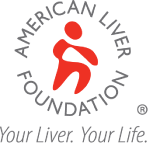Thank you for your interest in CCO content. As a guest, please complete the following information fields. These data help ensure our continued delivery of impactful education.
Become a member (or login)? Member benefits include accreditation certificates, downloadable slides, and decision support tools.

Professor of Medicine
Hospital Universitario Vall d'Hebron
Barcelona, Spain
Maria Buti, MD, has disclosed that she has received consulting fees from Gilead Sciences.
Before reading the activity, please provide a baseline answer to the following question. (We will ask the question again at the end of the activity to measure the educational impact of this program.)
Vertical transmission is responsible for the majority of all chronic HBV infections worldwide, so its prevention is essential both to protect the health of the newborn and to reduce the burden of chronic HBV infection. The risk of chronicity following acute HBV infection is inversely proportional to the individual’s age at the time of exposure, with very high rates of progression to chronicity (~90%) in those exposed at birth without vaccination and much lower rates (25% to 30%) among those exposed during childhood.
Factors associated with increased risk for vertical HBV transmission include maternal hepatitis B e antigen positivity, high maternal HBV DNA levels (≥200,000 IU/mL), high maternal hepatitis B surface antigen (HBsAg) titers (≥4-4.5 log10 IU/mL), and incomplete or delayed HBV vaccination of the newborn.
Maternal Antiviral Therapy
Antiviral therapy during the last trimester of pregnancy has been shown to reduce maternal viral load and, therefore, reduce the risk of vertical HBV transmission. For mothers who do not meet criteria for HBV treatment initiation for their own health, antiviral therapy should be considered if serum HBV DNA levels are high near the time of delivery, regardless of whether HBV vaccination is planned for the newborn. In fact, guidelines from EASL recommend that all pregnant women with HBV DNA levels ≥200,000 IU/mL or HBsAg levels ≥4 log10 IU/mL initiate antiviral prophylaxis at 24-28 weeks of gestation and continue therapy for up to 12 weeks after delivery. The guidelines note that there is a lack of data on the best time to discontinue treatment, for example, immediately after delivery or within the first 3 months following delivery.
Which antiviral should be used? TDF is effective at preventing vertical transmission, and EASL guidelines recommend TDF for this purpose. The guidelines note that among the antiviral drugs with high efficacy and high barrier to resistance (entecavir, TDF, and TAF), TDF has the most safety data during pregnancy. More recently, data have begun to accrue supporting the efficacy and safety of TAF for the prevention of vertical HBV transmission, and TAF has been shown to be associated with less bone and kidney toxicity vs TDF in comparative trials. In my clinic, we prefer to use TDF because it has minimal risk of drug resistance (like TAF), but the cost is lower than TAF.
Lamivudine is also effective in preventing vertical HBV transmission, but it has a lower barrier to drug resistance than does tenofovir. Some pregnant women in our care have extremely high levels of HBV DNA, and even a short course of lamivudine therapy can be associated with a risk of emergent drug resistance.
Newborn Vaccination and Hepatitis B Immunoglobulin
The introduction of newborn hepatitis B prophylaxis programs has significantly reduced vertical HBV transmission rates in regions where they have been effectively implemented. When HBV vaccination and hepatitis B immunoglobulin are given within 12 hours of birth, the rate of perinatal transmission is decreased from >90% to <10%. Cases of prophylaxis failure are nearly exclusively among women with high HBV DNA or HBsAg levels, supporting the guidance for maternal antiviral therapy in such cases.
Breastfeeding
Finally, infants who receive the first hepatitis B vaccine dose at birth can be breastfed. For women with chronic HBV infection who continue antiviral treatment after delivery, data from women with HIV also support the safety of antiviral therapy with TDF or lamivudine during breastfeeding. The European Medicines Agency prescribing information for TDF notes that although there are limited long-term data, no adverse reactions have been reported in breastfed infants of mothers receiving TDF and mothers receiving TDF for the treatment of HBV infection may breastfeed.
Your Thoughts
How are you preventing vertical HBV transmission in your clinic? Please join the conversation and share your experiences in the comments box.
Now that you have read the activity, please answer the following question to help us measure the educational impact of this program.

Contact Clinical Care Options
For customer support please email: customersupport@cealliance.com
Mailing Address
Clinical Care Options, LLC
12001 Sunrise Valley Drive
Suite 300
Reston, VA 20191

You are now leaving the CCO site. The new destination site may have different terms of use and privacy policy.